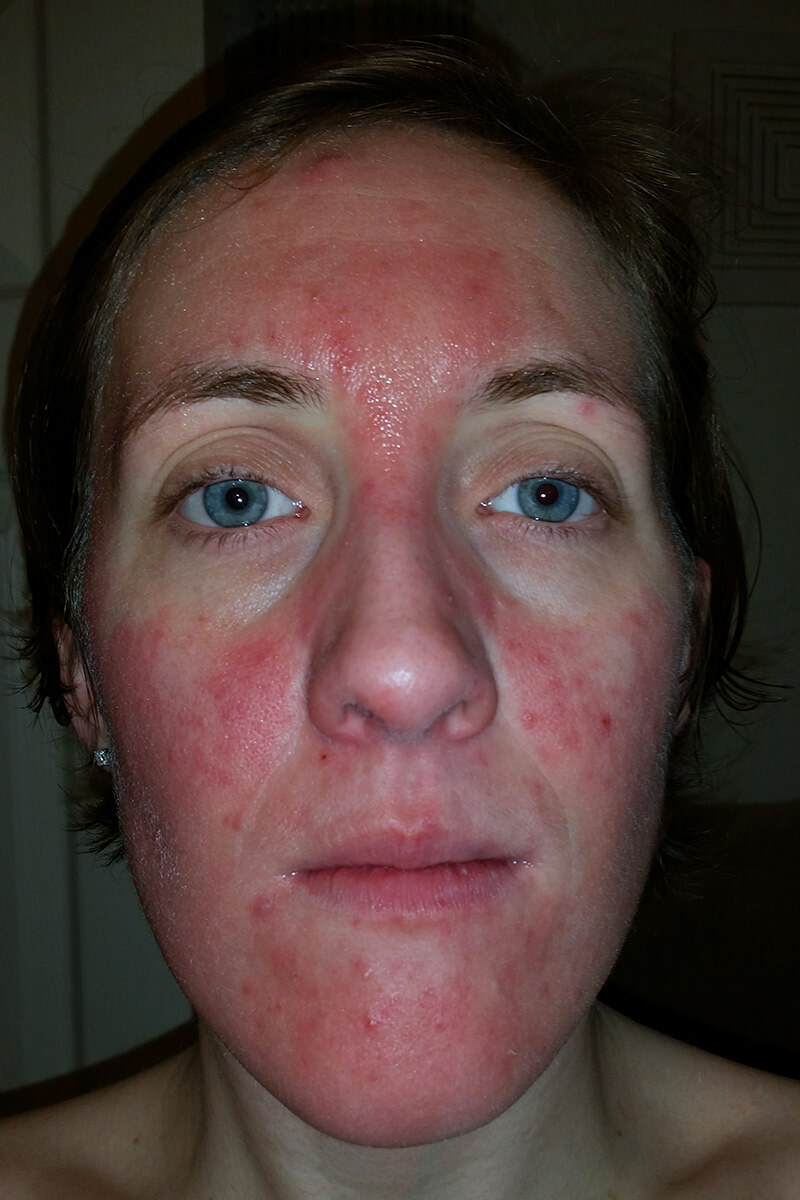 Rosacea, steroid-induced rosacea and perioral dermatitis look very similar: all three conditions cause redness and bumps and pimples on the face. However, their underlying causes are different, as is their recommended treatment. A recent study explored the differences in the skin microbiome — the community of microorganisms present on the skin of every human — in each disease and discovered insights that may help to improve treatment.
Rosacea, steroid-induced rosacea and perioral dermatitis look very similar: all three conditions cause redness and bumps and pimples on the face. However, their underlying causes are different, as is their recommended treatment. A recent study explored the differences in the skin microbiome — the community of microorganisms present on the skin of every human — in each disease and discovered insights that may help to improve treatment.
In the study published in Experimental Dermatology, researchers at the Tokyo Women’s Medical University in Japan used swabs to collect samples from the skin and from vellus hair – the thin, fine hair known as peach fuzz that grows on most of the body – from the nasolabial skin around the nose and mouth of 15 rosacea patients, nine patients with steroid-induced rosacea and 12 patients with perioral dermatitis, as well as a control group of 14 healthy subjects. Samples were taken from each subject four times over the course of 12 weeks; in those suffering from a disease, the first samples were gathered two weeks before the start of treatment with oral antibiotics. The researchers then used a process known as short-amplicon sequence analysis, where a sample of DNA is extracted from the specimens and amplified in order to identify and compare the diversity of the bacteria from the different samples.
Comparing the results, the microbiome of perioral dermatitis was significantly different from that of both rosacea sufferers and healthy controls, but similar to some of those with steroid-induced rosacea. In particular, an unidentified species of Neisseriales bacteria was present on perioral dermatitis patients’ skin and hair follicles, as well as on some of those with steroid-induced rosacea. Meanwhile, those with rosacea had significantly higher levels of a different unidentified species of Neisseriales than the other groups.
The Neisseriales species decreased or disappeared in most subjects after antibiotic treatment, and were replaced by bacteria that are common on healthy skin. However, the investigators noted that while both bumps and pimples as well as redness improved after treatment in the patients with steroid-induced rosacea and perioral dermatitis, oral antibiotics improved the bumps and pimples (papules and pustules) of the rosacea patients but not the redness (erythema) and small blood vessels (telangiectasia). They suggested that the skin microbiome may play an important role in the development of steroid-induced rosacea and perioral dermatitis, and further study may reveal a potential targeted treatment for these diseases.
Reference:
Mochizuki A, Osaka T, Fukuya Y, Yanagisawa N, Ishiguro N. Comparative Analysis of the skin microbiota of rosacea, steroid-induced rosacea and perioral dermatitis. Exp Dermatol 2025 Mar;34(3):e70084. doi: 10.1111/exd.70084. PMID: 40095381.